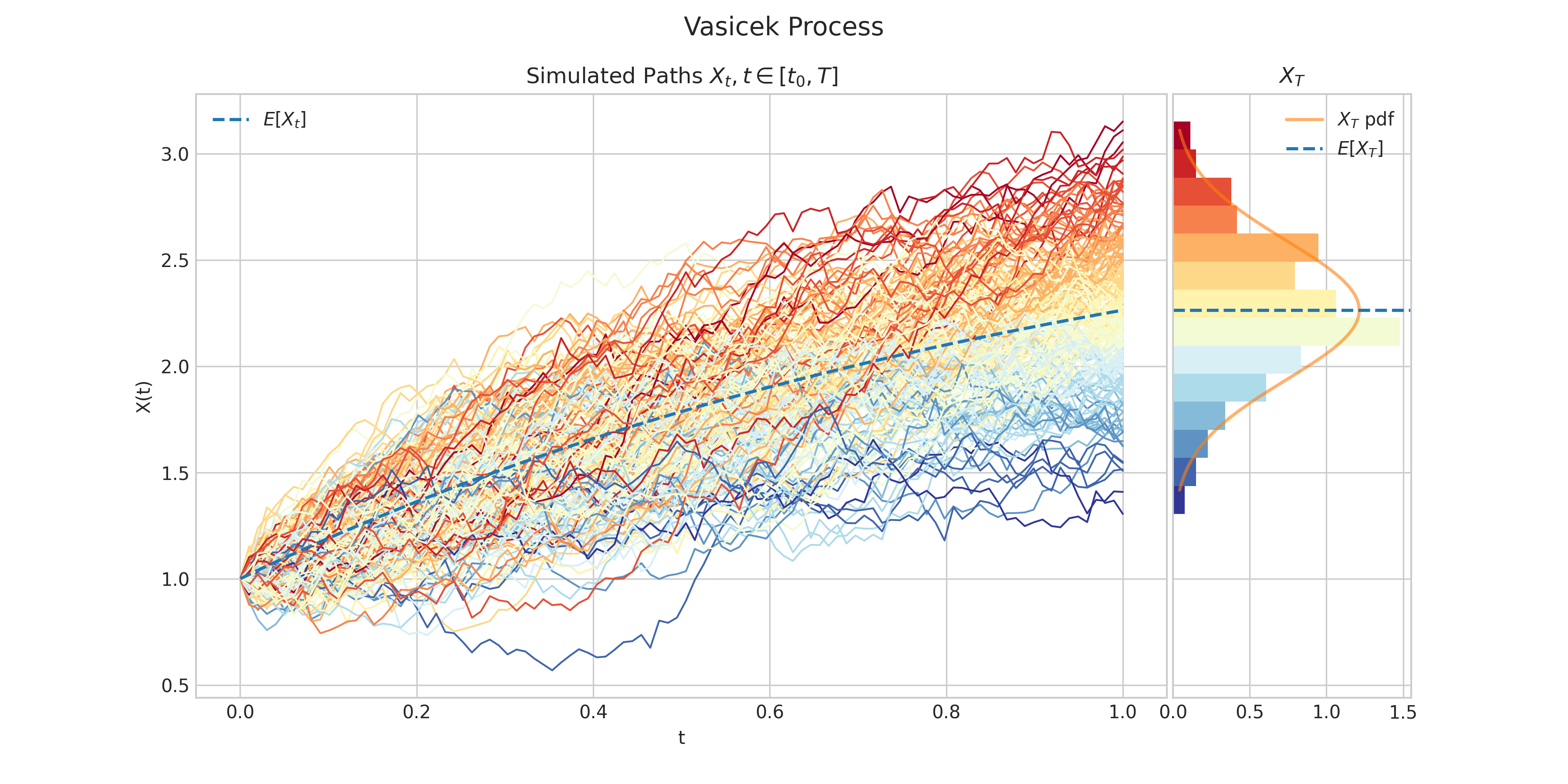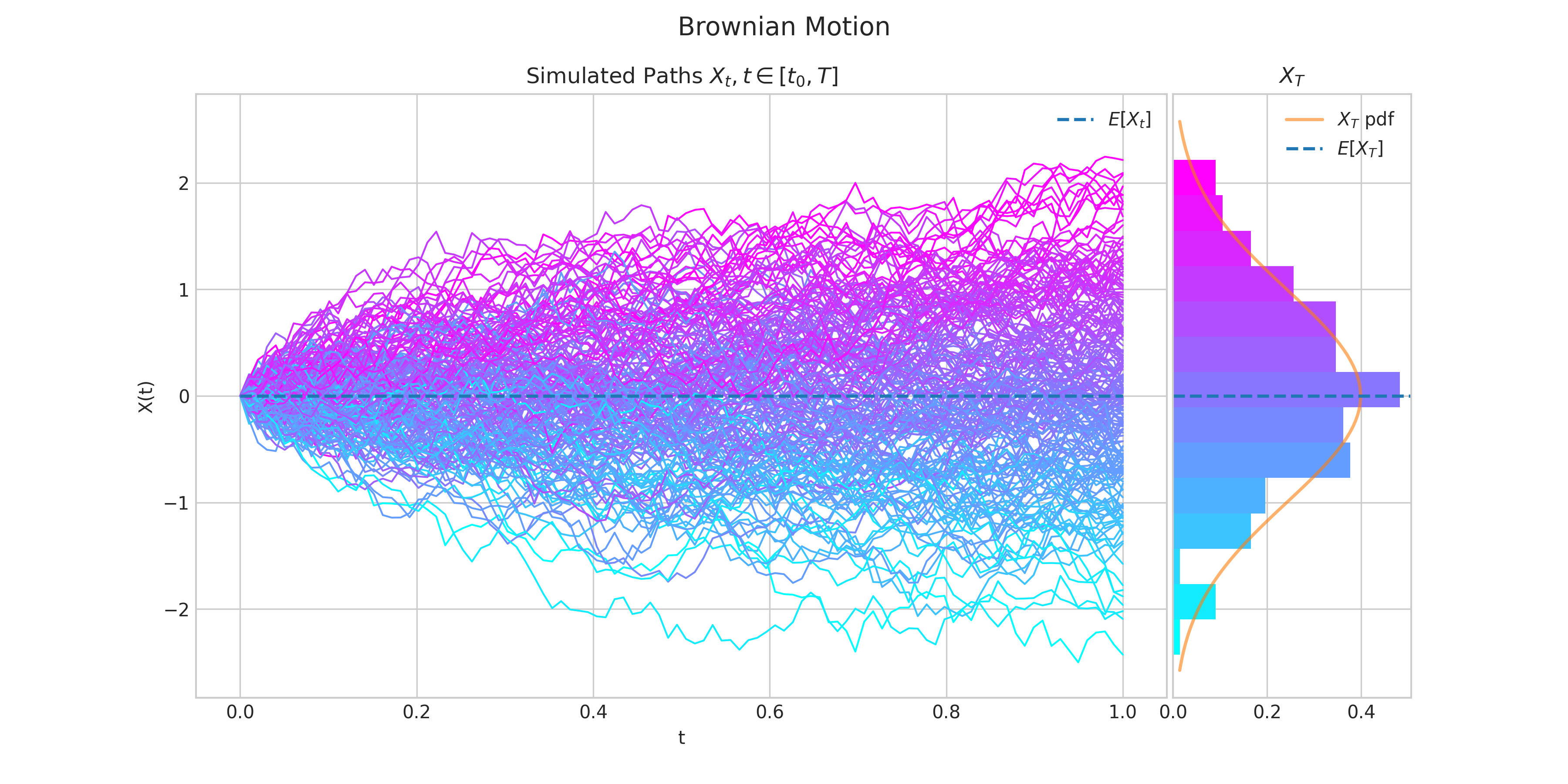The aleatory (/ˈeɪliətəri/) Python library provides functionality for simulating and visualising stochastic processes. More precisely, it introduces objects representing a number of stochastic processes and provides methods to:
- generate realizations/trajectories from each process —over discrete time sets
- create visualisations to illustrate the processes properties and behaviour
Currently, aleatory supports the following 13 processes:
- Arithmetic Brownian Motion
- Bessel process
- Brownian Bridge
- Brownian Excursion
- Brownian Meander
- Brownian Motion
- Constant Elasticity Variance (CEV) process
- Cox–Ingersoll–Ross (CIR) process
- Chan-Karolyi-Longstaff-Sanders (CKLS) process
- Fractional Brownian Motion
- Galton-Watson with Poisson branching
- Gamma process
- General Random Walk
- Geometric Brownian Motion
- Hawkes process
- Inverse Gaussian process
- Inhomogeneous Poisson process
- Mixed Poisson process
- Ornstein–Uhlenbeck (OU) process
- Poisson process
- Random Walk
- Squared Bessel processes
- Vasicek process
- Variance-Gamma process
Aleatory is available on pypi and can be installed as follows
pip install aleatory
Aleatory relies heavily on
numpyfor random number generationscipyandstatsmodelsfor support for a number of one-dimensional distributions.matplotlibfor creating visualisations
Aleatory is tested on Python versions 3.8, 3.9, 3.10, and 3.11
Aleatory allows you to create fancy visualisations from different stochastic processes in an easy and concise way.
For example, the following code
from aleatory.processes import BrownianMotion
brownian = BrownianMotion()
brownian.draw(n=100, N=100, colormap="cool", figsize=(12,9))generates a chart like this:
For more examples visit the Quick-Start Guide.
If you like this project, please give it a star! ⭐️
Connect with me via:
- 👾 Personal Website


